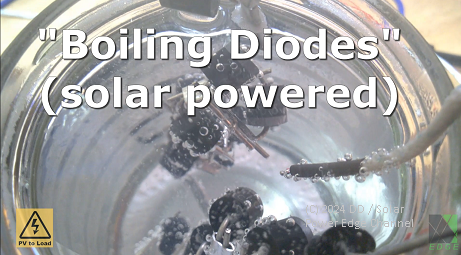Was thinking of solar panel matching to resistive heater when it occurred to me that diode string as a heater would be almost perfect match to solar panel output characteristics (at least compared to resistive heater)
Comes with some obvious limitations like limited temperature range and need to connect gazillion diodes in series but might actually prove usable in some small scale project?
Comes with some obvious limitations like limited temperature range and need to connect gazillion diodes in series but might actually prove usable in some small scale project?





